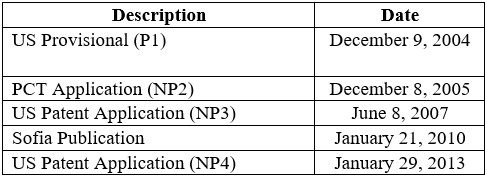The US Court of Appeals for the Federal Circuit affirmed a Patent Trial & Appeal Board (Board) decision that there was insufficient written description in the asserted priority applications to support a genus claim because of a lack of ipsis verbis disclosure and insufficient blaze marks. The Court concluded that the priority applications did not support an early priority date. Regents of the University of Minnesota v. Gilead Sciences, Inc., Case No. 21-2168 (Fed. Cir. March 6, 2023) (Lourie, Dyk, Stoll, JJ.)
Gilead filed a petition for inter partes review (IPR) challenging Minnesota's patent directed to phosphoramidate prodrugs preventing virus reproduction or cancerous tumor growth. Gilead's US Food & Drug Administration-approved drug, sofosbuvir, is marketed by Gilead to treat chronic hepatitis C infections and falls within claim 1 of the patent.
The 2014 application that issued as the challenged patent claimed priority to four applications. In the IPR, Gilead argued that the claims were anticipated by a Gilead-owned patent publication (Sofia). The publications used in the decision are as follows:

NP3 and NP2 have the same disclosure. NP2 and P1 contain similar disclosures, which the Board called NP2-P1. The broader claim in NP2-P1 has a relationship of genus to the narrower subgenus claims in the patent at issue. There was no dispute that Sofia disclosed every limitation of each challenged claim. The Board held that NP2-P1 failed to provide a sufficient written description to support the asserted priority date of the challenged claims, which were therefore found to be anticipated by Sofia. Minnesota appealed.
Minnesota argued the following to the Federal Circuit:
- The Board erred in holding that the NP2-P1 applications have insufficient written description.
- The Board ran afoul of Administrative Procedure Act (APA) requirements.
- Minnesota is a sovereign state entity immune from IPR.
35 U.S.C. § 120 sets forth requirements for a patent application to benefit from a filing date of an earlier application. Minnesota asserted that the NP2-P1 priority applications literally described or provided blaze marks to the challenged subgenus claims. The Federal Circuit disagreed, explaining that written description for a genus claim of chemical compounds raises "particular issues," requiring a description of the outer limits of the genus and either a representative number of members or structural features common to the members of the genus. The Court found that the asserted priority applications (NP2-P1) did not provide such description and the challenged claims were not entitled to the filing dates of those applications.
The Federal Circuit found that the asserted priority applications did not provide ipsis verbis disclosure of the challenged subgenus claim. The Court quoted an oft-noted saying associated with Yogi Berra, a catcher for the New York Yankees some 50 years ago, about a notable failure to provide direction: "when one comes to a fork in the road, take it." The Court also cited its 1996 decision in Fujikawa v. Wattanasin for the proposition that "a compendium of common organic chemical functional groups, yielding a laundry list disclosure of different moieties for every possible side chain or functional group," cannot be relied on for ipsis verbis support. The Court viewed the priority applications as providing only a "maze-like path" and a "laundry list." The Court considered that the many options listed in the P1 application did not provide support for the challenged subgenus claim: "Just because one moiety is listed as a possible choice for one position does not mean there is ipsis verbis support for every species or sub-genus that chooses that moiety."
The Federal Circuit also disagreed that a person of ordinary skill would have been able to visualize or recognize the members of the claimed genus by searching for blaze marks that guide a skilled artisan to the claimed subgenera. Citing its 2010 decision in Ariad Pharms. v. Eli Lilly, the Court explained that the priority applications did not sufficiently describe adequate blaze marks to support the challenged claims, and therefore Sofia qualified as prior art.
Regarding Minnesota's APA argument, the Federal Circuit found that the Board did not fail to address key aspects of expert testimony purporting to explain why a skilled artisan would have understood the NP2-P1 applications to describe the claimed subgenus. The Court found that it was within the Board's discretion to weigh the evidence of record. The Court also disagreed that the Board's decision was inconsistent with a prior Board decision involving a Gilead patent that resulted in a different outcome. That decision was nonprecedential and involved a different Board panel, a different challenged patent with different claims, and a different petitioner. The Court concluded that the prior decision did not bind the Board panel here to find adequate written description support.
In response to Minnesota's assertion that it was a sovereign state entity immune from IPR, Gilead argued that the Court had already rejected this argument and that the Supreme Court had declined to hear the case. The Federal Circuit agreed and found that Minnesota was collaterally estopped from asserting sovereign immunity here.
The content of this article is intended to provide a general guide to the subject matter. Specialist advice should be sought about your specific circumstances.


